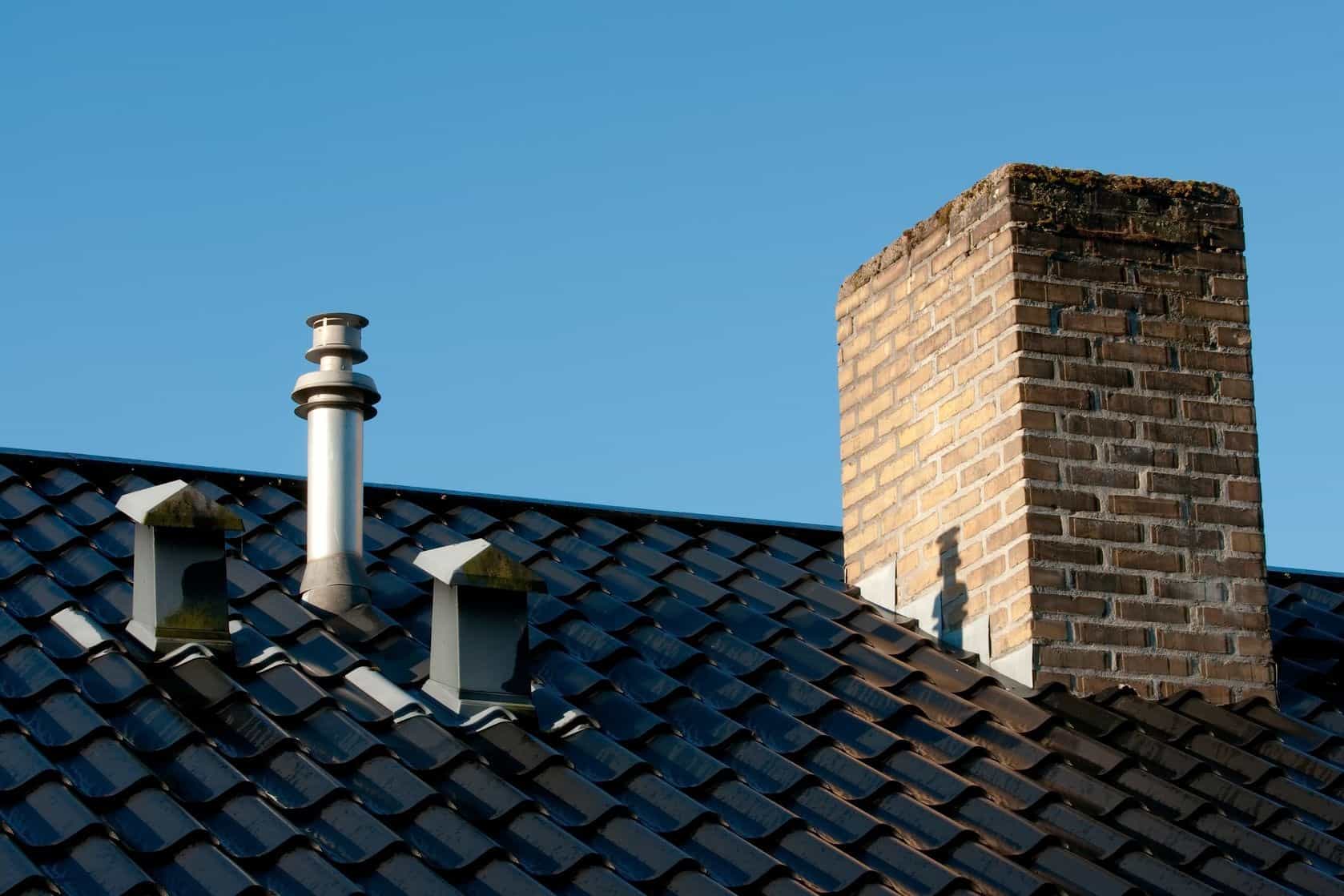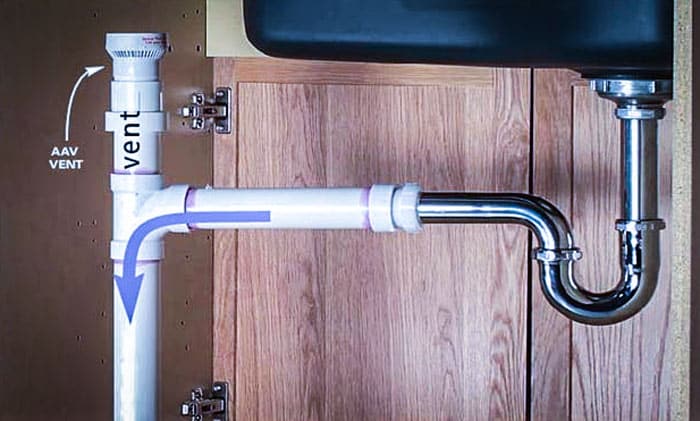How Correct Ventilation Safeguards Your Plumbing System
How Correct Ventilation Safeguards Your Plumbing System
Blog Article
Here underneath you can find a good deal of very good guidance related to Essential Plumbing Vent Pipes: Understanding Their Role.

Appropriate ventilation in plumbing systems is frequently neglected, yet it is essential for keeping the capability and safety of your home's pipes. Ventilation assists regulate atmospheric pressure, protect against the accumulation of dangerous gases, and make certain the reliable removal of waste. In this guide, we will certainly explore the relevance of correct plumbing ventilation, just how it functions, and the benefits it offers your plumbing system.
Comprehending Air Flow in Plumbing
Air flow in plumbing describes the network of pipes that allow air to move through the water drainage system. These vents offer several purposes, including managing air pressure within the pipes, stopping sewage system gases from going into the home, and aiding in the smooth circulation of wastewater.
How Air Flow Functions in Plumbing Systems
Atmospheric Pressure Policy
Proper air flow maintains well balanced air pressure within the plumbing system. When water moves via pipelines, it displaces air. Without sufficient air flow, this displacement can produce adverse pressure, resulting in reduce drains pipes or siphoning of water from catches, which can trigger unpleasant smells to leak right into the home.
Stopping Drain Gas Build-up
Among one of the most vital functions of pipes vents is to stop sewer gases, such as methane and hydrogen sulfide, from building up within the home. These gases can pose significant health dangers and are highly flammable. Vent pipes enable these gases to leave securely outside.
Assisting in Waste Removal
Air flow helps in the reliable elimination of wastewater by stopping airlocks in the drain system. When air can flow freely with the vents, it permits water and waste to flow efficiently via the pipelines, lowering the danger of blockages and back-ups.
Sorts Of Pipes Vents
Key Stack Vent
The major pile vent, additionally known as the air vent stack, is the key air vent in a pipes system. It expands from the main drainpipe line up through the roof covering, permitting gases to leave and fresh air to go into the system.
Branch Vent
Branch vents attach to the major pile air vent and serve individual fixtures, such as sinks, bathrooms, and showers. These vents guarantee that each component has appropriate ventilation to function correctly.
Air Admission Shutoff (AAV).
An Air Admittance Shutoff (AAV) is a one-way valve that permits air to go into the plumbing system without the requirement for a traditional air vent pipe prolonging through the roof. AAVs are generally made use of in restorations or locations where mounting a conventional vent is impractical.
Indications of Poor Air Flow in Pipes.
Slow Draining Fixtures.
If your sinks, bathtubs, or toilets are draining gradually, maybe an indicator of inadequate ventilation. Insufficient air flow can develop a vacuum effect, making it tough for water to drain pipes effectively.
Gurgling Seems.
Gurgling sounds originating from drains are often an outcome of air being sucked through water catches as a result of unfavorable stress in the pipelines. This is a clear sign of inadequate ventilation.
Undesirable Odors.
Sewer odors inside your home are a warning that your pipes system is not appropriately aerated. This can indicate that drain gases are not being appropriately vented outside, resulting in potentially harmful conditions.
Common Air Flow Errors.
Poor Vent Sizing.
Making use of small vent pipes can lead to inadequate air flow and pressure imbalances in the system. It's necessary to utilize vents that satisfy the details requirements of your plumbing system.
Improper Vent Positioning.
Positioning vents too much from the fixtures they serve can lower their efficiency. Appropriate positioning guarantees that air can stream openly and efficiently through the system.
Disregarding Code Demands.
Building codes provide certain guidelines for pipes ventilation. Disregarding these codes can lead to a system that stops working to work properly and may result in costly repair services or health hazards.
Benefits of Correct Ventilation.
Boosted System Effectiveness.
Effectively ventilated plumbing systems operate much more efficiently, with fewer blockages, faster draining pipes, and much less strain on the pipes. This effectiveness prolongs the lifespan of the pipes system.
Improved Air High Quality.
By stopping sewage system gases from entering your home, correct air flow contributes to much better interior air quality, making your living environment healthier and more comfortable.
Preventing Water Damages.
Ample air flow helps avoid water from being siphoned out of catches, which can cause sewage system gases getting in the home and creating water damages over time.
Steps to Guarantee Correct Air Flow.
Consulting Plumbing Codes.
Constantly seek advice from neighborhood plumbing codes when developing or changing your plumbing system. These codes provide the essential standards for proper airing vent and guarantee your system fulfills safety and security standards.
Normal Evaluation and Maintenance.
Normal inspections can help recognize possible air flow issues before they end up being major issues. Upkeep jobs, such as cleaning up vent pipelines and looking for clogs, are essential for maintaining the system in good working order.
Professional Setup.
For brand-new installments or major adjustments, it's a good idea to work with a specialist plumbing technician. They have the knowledge to make certain the air flow system is properly created and set up according to code.
Verdict.
Proper ventilation is a crucial element of any kind of pipes system, making sure that it works effectively and securely. By comprehending the value of air flow, acknowledging the indications of inadequate air flow, and taking actions to keep your system, you can protect against expensive issues and secure your home's air high quality.
4 Things You Should Know About Your Plumbing Vents
What Plumbing Vents Are
Also called a vent stack, a plumbing vent is a vertical pipe attached to your drain line that runs through your roof. The plumbing vent pipe, or plumbing air vent, removes gas and odors from your plumbing system and allows fresh air to enter the pipes, helping the water to flow out of the drain pipes.
What Plumbing Vents Do
Plumbing vents have two basic functions. One of which is to allow unpleasant smelling wastewater and sewer gasses to escape your plumbing system instead of entering your home. Plumbing vent pipes are typically located on roofs, away from windows, to ensure the fumes exit the home completely.
The other function of the plumbing vent is to move fresh air into your plumbing system. This helps move water through every plumbing fixture in your house, like toilets and sink drains. Think of the way in which you need to let a little air into the bottle as you pour soda in order to make the drink flow smoothly.
Different Types of Plumbing Vents
True vent: This is the most common vent option. In simplest terms, a true vent is a vertical pipe attached to your drain line that exits through the roof. They often function as the main vent that other fixtures can connect to. Re-vent pipe or auxiliary vent: Attached to the drain line near specific plumbing fixtures, re-vent pipes run up and over to connect to the main vent. Common vent: Two plumbing fixtures installed on opposite sides of a wall are typically tied into the vent stack using something known as a sanitary cross. Wet vent: This venting option operates as a drain pipe and a vent at the same time. Wet vent drainage systems drain water from one fixture while venting the air from another. Although they’ve been used for over 100 years, wet vent systems have only recently been added to the plumbing code in many areas. If you’re planning on installing one in a bathroom remodel, make sure you check your local code prior to construction. Loop vent: For free-standing fixtures like kitchen island sinks, loop vents are ideal. These vent pipes run under the floor, rise from the P-trap, and create a loop inside the cabinet sink. Air admittance valve: An AAV is a one-way mechanical valve typically installed at the site of the plumbing fixture. AAVs allow venting to occur without having to tie into a larger venting system. They’re ideal for venting fixtures where you aren’t able to easily connect to an existing vent system. Common Plumbing Vent Issues
Although vent pipes typically don’t have water flowing through them, they’re still subject to many typical plumbing issues. For example, clogs are one of the most common problems associated with sewer vent pipes. If your vent pipe gets clogged, all of your plumbing fixtures tied into the vent stack will be affected.
A sink with a slow drain that bubbles and gurgles or a strong sewage smell around your toilet are both indicators that your toilet vent pipe is clogged. Because most vent pipes exit through the roof, old leaves, twigs or even a bird’s nest could be clogging the pipe.
Clogs in your vent pipe system cause a buildup of negative pressure, meaning that water won’t be able to flow out of your home very well. It’s similar to putting your finger over the opening of a straw to trap water inside. When you remove your finger, the water is able to flow out of the straw.
If you suspect you have any blockage in your vent, make sure you have a professional come examine the situation. Left unchecked, a blocked air vent can lead to other costly repairs, like leaks and sediment buildup.
Under Pressure
Pipe vents are essential aspects of a home’s plumbing system. Owning a home means learning about all sorts of things you never put much thought into before. But by understanding as much as you can about the important systems of your home, you can keep those budgets intact and those anxiety levels low.
https://www.homeserve.com/en-us/blog/home-improvement/plumbing-vents/

I came across that review on What Are Plumbing Vents and Why Are They Important? while doing a lookup on the web. Are you aware of another individual who is very much interested in The Upsides of Proper Ventilation in Plumbing Design? Please feel free to promote it. We take joy in reading our article about .
Click Here Report this page